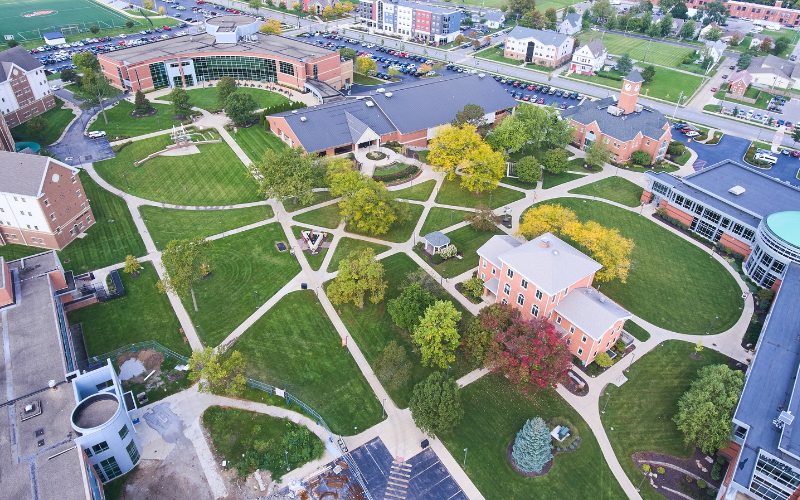You can’t read a recent issue of The Chronicle of Higher Education or Inside Higher Ed without seeing an article discussing the disruption that technology or MOOCs (Massively Open Online Course) are having or will have on the higher education sector. Because of the publicity, I receive questions from colleagues at conferences and other events asking me for my opinion about the potential for higher education disruption, the roadmap that it will take, and who will survive. I have written about MOOCs in the past (see “What is a Massive Open Online Course? (aka MOOC),” “Alternative Certification – A Good Idea?,” and “What to Make of All the Rapid Innovations in Higher Education?”) and written about online education and other technological innovations in higher education. I have been a participant in a MOOC and my institution has hosted a MOOC. I have reviewed books written by Clayton Christensen (Disrupting Class: How Disruptive Innovation Will Change the Way the World Learns and The Innovative University: Changing the DNA of Higher Education from the Inside Out), Rich DeMillo (Abelard to Apple: The Fate of American Colleges and Universities), and others who discuss the potential for disruption. I have not tried to speculate about roadmaps for disruption or survivors versus “losers” in the outcomes. However, in order to provide an answer, I will discuss a scenario or two, couch it with caveats, and acknowledge that technology changes so quickly that a new innovation could disrupt my disruption.
Die-hard opponents of change in higher education are not fans of online education. They argue that it is not as effective as face-to-face education despite evidence to the contrary (see my article “Department of Education Study Finds that Online Education is Beneficial to Student Learning” which explores the results of a Department of Education meta-analysis). My response to the critics of online education is that the best teachers provide the best education regardless of medium. I was fortunate to have had great teachers and professors at the five schools and universities that I graduated from, but I also had a few not so great teachers. Online education is here to stay for a number of reasons: (1) it is a proven and acceptable medium of instruction, (2) online courses offered in asynchronous formats provide convenience for students who are unable or who do not want to attend classes (online or face-to-face) during more traditional times and at more traditional locations, (3) it provides a potential for scale in education, and (4) it provides a potential for lower cost education utilizing either technology, cost advantages due to the format (i.e., reduced/no cost of physical plant for classrooms, dormitories, cafeterias, athletic teams, etc.), scale, or any combination of the previous three.
Do I think that online education is going to continue to grow? Absolutely! Do I think that non-profits will accelerate the pace of growth of their online offerings? Absolutely! Do I think that some colleges will go out of business? Absolutely! Do I know who the successful colleges and universities will be and who the losers will be? No, I don’t. However, I believe that one can make a few assumptions about the higher education landscape over the next few years.
First, the elite colleges will continue to thrive. They have the best resources including finances, brand, faculty, researchers, fund raising, and students. The value of their brand is buttressed by limiting the consumers of their product to a very small, elite group, with a backup group of consumers just as qualified as those admitted. Second, institutions with financial support beyond tuition and fees will survive assuming that they can continue to effectively offer a quality product for a cost that is covered by tuition, fees, and other sources of income. This group includes state schools and private non-profits with outside support and sizable endowments. Third, tuition dependent institutions with low enrollments and low endowments will find it difficult to survive. Moreover, the fixed cost model adopted by most of the traditional schools in this category will make survival difficult. Christensen recommends that these schools change their fixed cost model and embrace online courses/programs, priced at the margin. For the most part, these schools have ignored Christensen’s advice. Lastly, institutions with large online enrollments today will have to adapt to changes in the environment induced by technology including MOOCs, but probably not for the reasons that some imagine.
Higher education is under tremendous pricing pressures. The elite institutions can charge whatever they want, but the rest of the market is up for grabs. If a student is not able to obtain admission to a top 100 school, he is much more likely to examine all the factors including the cost of a degree at the institutions that accept him. Taking “free” MOOCs would enable a person to reduce the cost of their college degree assuming that a college would accept the certificate of completion. Already, some colleges are indicating that a student who completes a proctored final exam or an exam administered by their school will receive credit for certain MOOCs offered by edX, Coursera, and Udacity. That is not surprising given that many colleges accept credit for courses with tests like the Advanced Placement Exam and CLEP exams.
There are critics who are concerned about the MOOCs and their current lack of demonstrated learning outcomes and learning outcomes assessments. Some of the first MOOCs utilized existing automated grading and feedback technologies in computer science, statistics, and math courses. Those types of technologies are not appropriate for all academic disciplines. Peer grading is also difficult with non-native English language students. Over time, many of these concerns can be resolvedfor all but the students who are incapable of completing college level coursework. However, improving learning outcomes may reduce the cost effectiveness of these courses in their existing format. Recently, I read an article about a MOOC course whose cost was $167,000 to teach 3,500 students. That’s approximately $48 per student for a single course. That’s impressive, but not surprising. Companies like StraighterLine already offer courses for $99 per student per month. Single courses are easy to design and offer for low cost, particularly if you can scale. In my opinion, scaling and demonstrating quality learning outcomes for a diverse group of students is difficult to do. In fact, it’s one of the reasons why our institution has capped the number of students in a course section at 25.
College, however, is and should be a lot more than a single course. The best online programs not only make the courses interesting but create online student commons to engage the student outside of the classroom. A college degree also implies that an individual has completed a prescribed curriculum that qualifies that individual for multiple career options and/or graduate studies. Can an individual who completes a number of MOOCs or other technology-enabled courses demonstrate the same qualifications as someone who attends an online program that is modeled like a traditional college? Maybe. Maybe not. I would think that it would be very difficult today for an individual with a pile of certificates from completed MOOCs to compete with someone with a four-year degree from an accredited institution. However, that does not mean that in time, the situation couldn’t change. Institutions with large online student populations will have to be mindful of the value proposition of their programs. Does it still pay for a student to complete many courses at the same institution or is the student better off to complete a number of free courses elsewhere? The quality of the programs, faculty and the career opportunities offered for their students/future graduates will aid those institutions in maintaining enrollments. Those institutions with high tuition and a lower perceived value proposition will have trouble maintaining their enrollments given the new sources of competition. Presently, the traditional schools that are adding online enrollments are not providing lower cost alternatives and are relying on their brand appeal. The MOOCs are currently unable to demonstrate learning outcomes other than grades (many of which are peer reviewed) and for many, the grades may represent the background characteristics of the highest achieving students more than the learning that took place in that class for the average student. Time will tell, but institutions that are adaptive and utilize technology in an effective manner should fare well in what Rich DeMillo has called “the tsunami” of online education.










